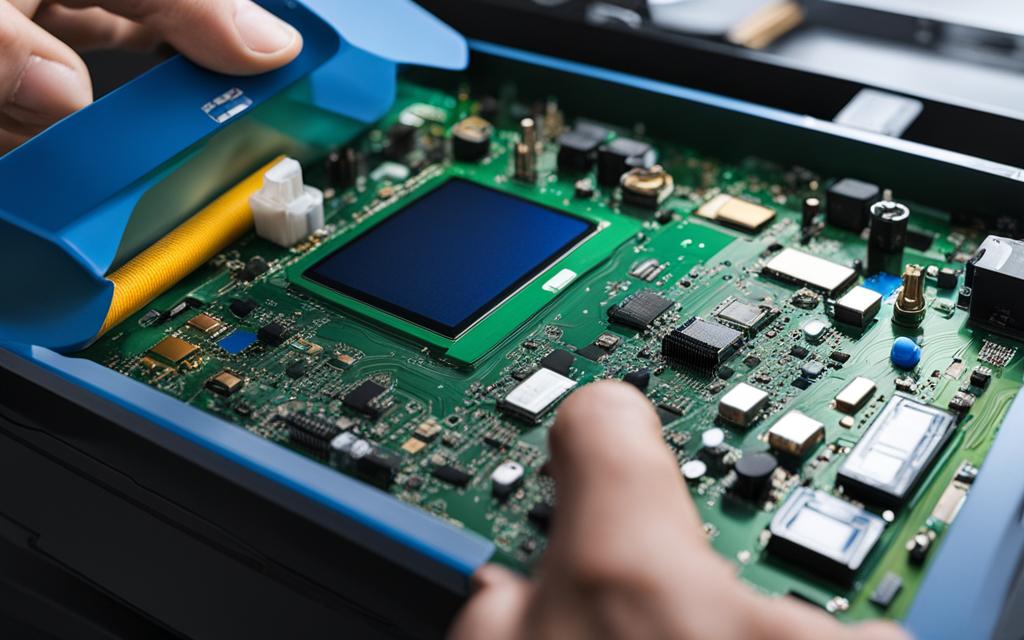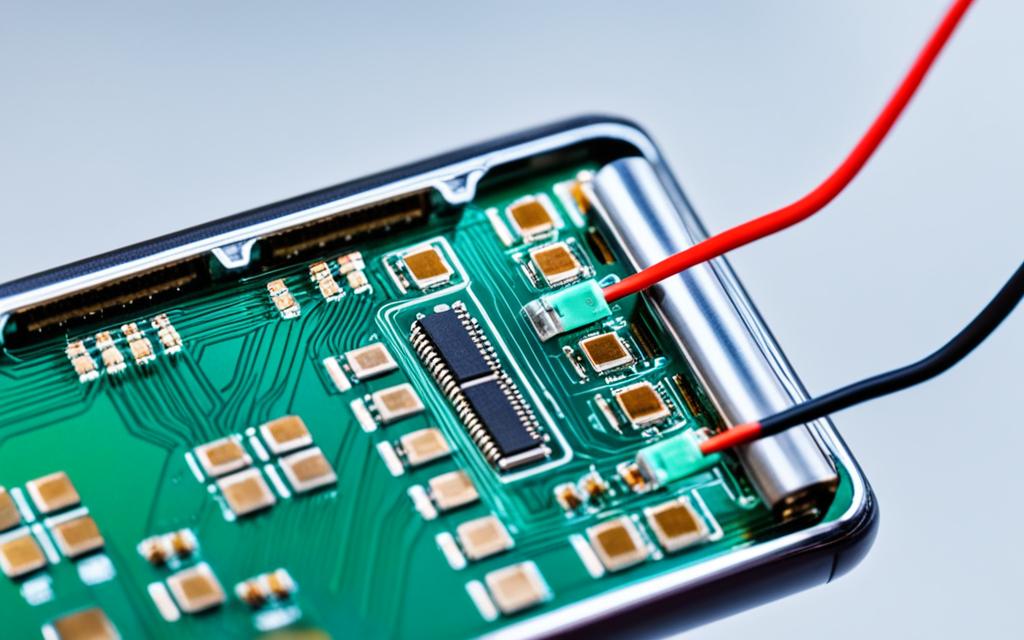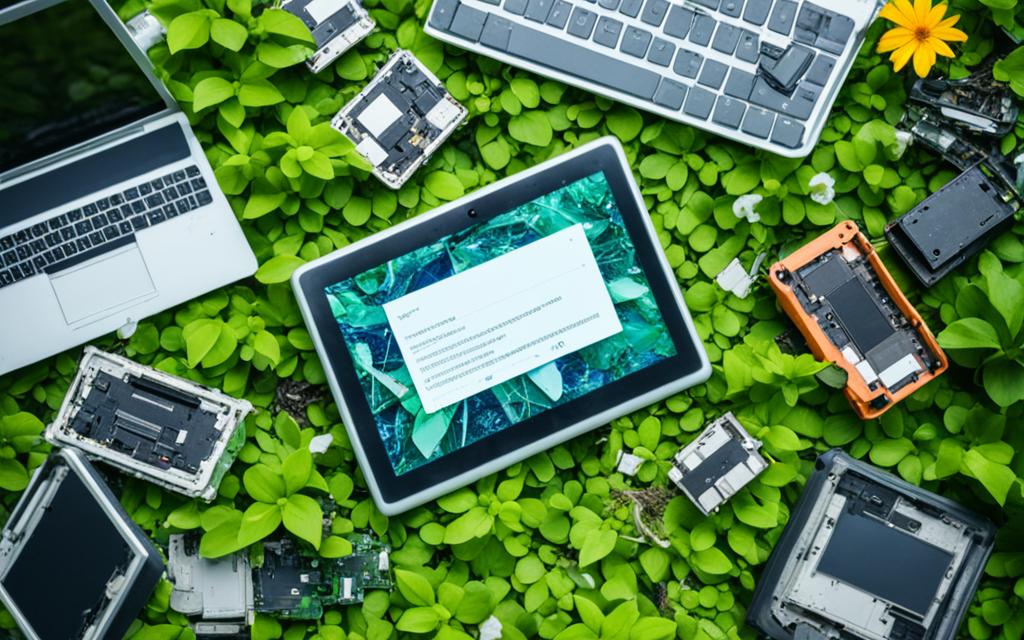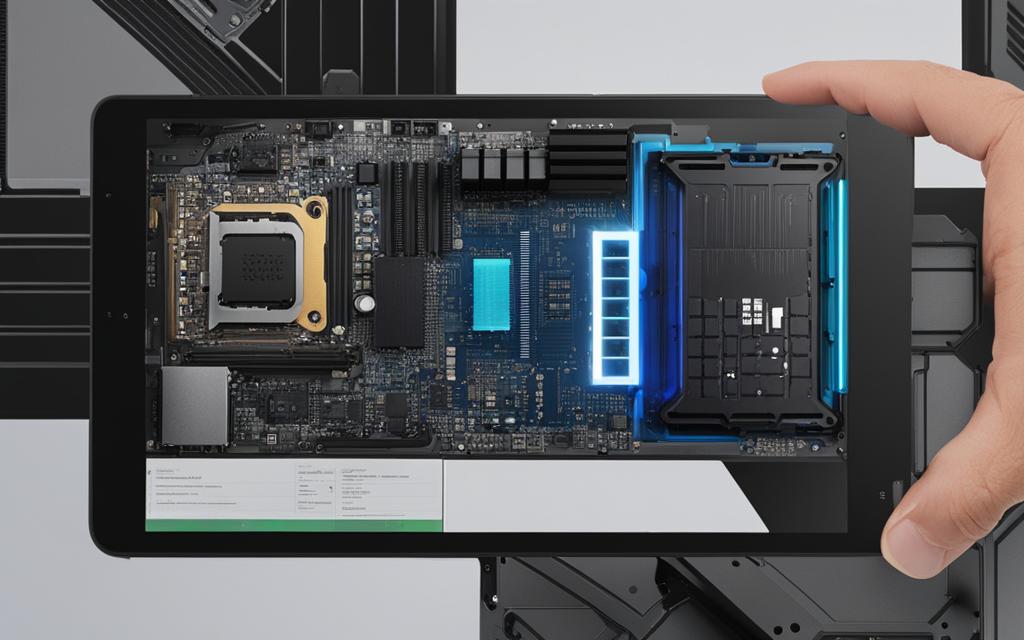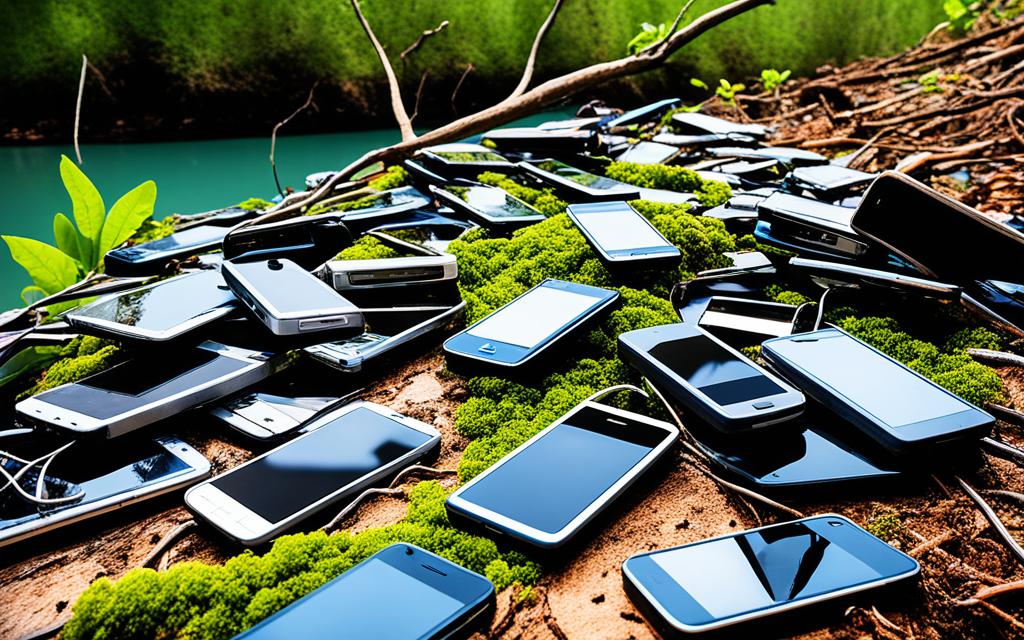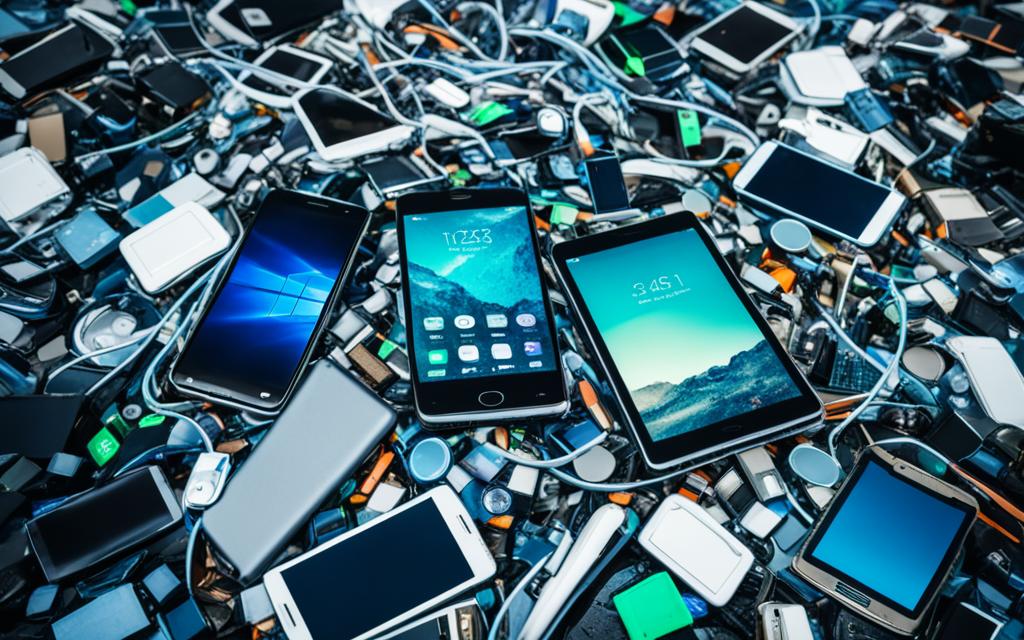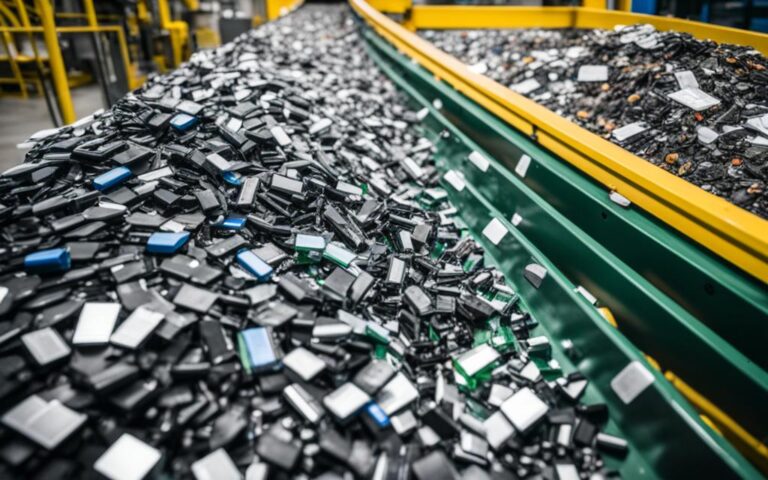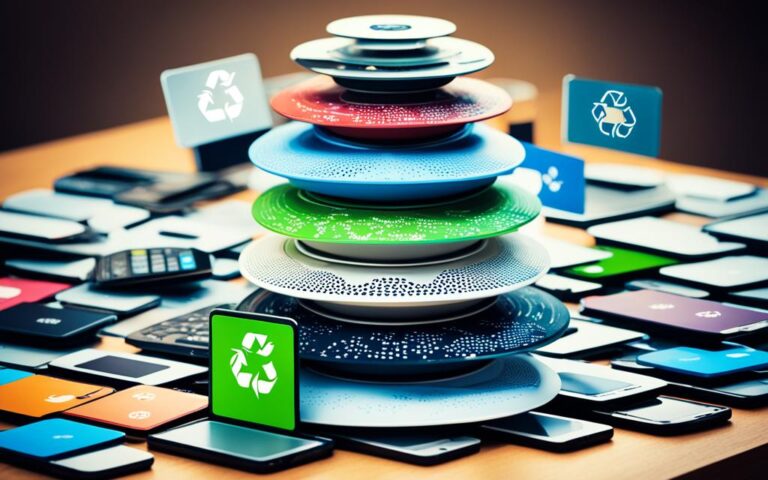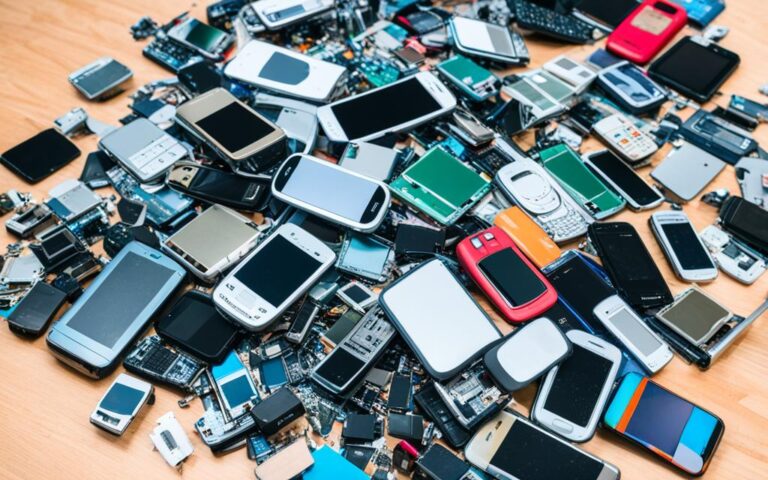The Lifecycle of a Recycled Tablet
In today’s digital age, tablets have become an indispensable part of our lives. From work to entertainment, these compact devices offer convenience and functionality. But have you ever stopped to think about what happens to your tablet when you no longer need it? With the rapid advancement of technology, tablets have a limited lifespan, and their disposal raises important concerns about e-waste management.
Tablets, on average, have a lifespan of seven years, longer than their computer and smartphone counterparts. However, even after they’ve served their purpose, these sleek devices can still contribute to the growing e-waste problem. LCD displays, commonly found in tablets, contain harmful substances that can harm the environment if not disposed of properly.
Thankfully, there are several options available for recycling tablets and minimizing their impact on the environment. Many retailers offer buyback programs, allowing you to trade in your old tablet for a discount on a new one. Refurbishment is another option, where tablets are repaired and resold, giving them a second lease on life.
Proper end-of-life management is crucial to reduce the environmental impact of discarded tablets. By recycling through drop-off facilities or participating in buyback programs, we can help ensure that valuable materials are recovered and waste is minimized. Together, let’s embrace tablet recycling and contribute to a more sustainable future.
The Lifespan of Desktop Computers
Desktop computers are powerful tools that have become an indispensable part of our lives. However, have you ever wondered about their lifespan and the impact they have on the environment? Let’s explore the lifecycle of desktop computers, the e-waste they generate, and the recycling options available.
Short Lifespan and E-waste Impact
Desktop computers typically last between three to five years before they need hardware replacements or become outdated. Unfortunately, this relatively short lifespan contributes significantly to the global e-waste problem. When improperly disposed of, desktop computers release toxic chemicals into the environment, endangering our health and polluting our surroundings.
“The rapid turnover of desktop computers is alarming. We need to address this issue by adopting sustainable practices and promoting responsible e-waste management.”
Environmental Hazards of Desktop Monitors
One component of desktop computers that poses a significant environmental concern is the LCD monitor. These monitors contain toxic chemicals such as mercury and lead, which can be hazardous when they end up in landfills. Ensuring proper disposal and recycling of desktop monitors is essential to minimize the environmental impact.
Recycling Options for Desktop Computers
When it comes to the end of their useful life, desktop computers can be recycled or donated to extend their lifespan and reduce e-waste. Recycling facilities specialized in e-waste management can safely dismantle the computers and salvage valuable materials like gold and palladium from the circuit boards.
Additionally, donating desktop computers to schools, non-profit organizations, or community centers can help bridge the digital divide and give these devices a second life. It’s important to ensure that any data on the computer’s hard drive is properly erased before donation to protect privacy.
Inspiration to Protect Our Environment
By understanding the lifespan of desktop computers and their impact on the environment, we can make conscious decisions to minimize e-waste and contribute to a sustainable future. Recycling or donating our desktop computers ensures that valuable resources are recovered, pollution is reduced, and the lifespan of these devices is extended.
Remember, responsible e-waste management is not just the responsibility of individuals but also manufacturers, policymakers, and recycling facilities. Together, we can work towards a circular economy and a cleaner, greener planet.
| Benefits of Recycling Desktop Computers | Benefits of Donating Desktop Computers |
|---|---|
|
|
The Lifespan of Laptops
In today’s digital age, laptops have become an essential tool for work, communication, and entertainment. However, it’s important to consider the lifespan of laptops and their impact on the environment. Laptops, like their desktop counterparts, have an average lifespan of three to five years.
During their lifespan, laptops may develop hardware or software issues that make them less efficient or no longer suitable for everyday use. When laptops reach the end of their life, improper disposal can lead to significant environmental consequences and contribute to the growing e-waste problem.
One major concern is the presence of lithium batteries in laptops. While lithium batteries are known for their long-lasting power, they have their drawbacks when it comes to sustainability.
Image:
Lithium is a finite resource, and its extraction has environmental implications. Furthermore, when laptops with lithium batteries are improperly disposed of, these batteries can release hazardous substances into the soil and water, causing pollution and posing risks to human health.
To mitigate the environmental impact of laptops, recycling or refurbishing them is crucial. By recycling laptops, valuable materials can be recovered and reused, reducing the need for raw materials and the associated environmental impact of extraction and production.
Refurbishment is also an option for extending the lifespan of laptops. By repairing and upgrading components, laptops can be given a second life, reducing the demand for new devices and minimizing waste.
Table:
| Laptop Lifespan | E-Waste Impact | Lithium Battery Concerns |
|---|---|---|
| Three to five years | Significant contribution | Environmental pollution and resource depletion |
It’s important to note that proper management of laptop end-of-life is essential for reducing the environmental impact. Consumers can explore options such as recycling through designated drop-off facilities or participating in buyback programs offered by manufacturers and retailers.
By responsibly disposing of laptops and choosing sustainable options, we can help minimize e-waste, recover valuable materials, and contribute to a more sustainable future.
The Lifespan of Smartphones
Smartphones have one of the shortest lifespans among electronics, typically lasting about three years. The rapid turnover of smartphones is driven by battery life decline and the release of newer models with improved features.
The disposal of smartphones contributes to significant e-waste production, with an estimated 1.5 billion smartphones shipped worldwide in 2021 alone. This alarming figure highlights the urgent need for effective management of smartphone end-of-life.
Recycling unwanted smartphones is crucial to reduce environmental impact, particularly for the recovery of valuable metals like gold and palladium. By recycling smartphones, these precious materials can be extracted and reused, minimizing the need for environmentally harmful mining practices.
The proper recycling of lithium batteries, which power smartphones, is of utmost importance. These batteries contain hazardous materials that can pollute the environment if not disposed of correctly. Recycling facilities specialize in safely handling lithium batteries, ensuring their proper disposal and preventing potential harm.
Moreover, smartphone refurbishment is another sustainable option. Refurbishing involves repairing and restoring old smartphones, extending their lifespan and reducing the demand for new devices. Refurbished smartphones provide an affordable alternative while contributing to the circular economy.
The Environmental Impact of Discarded Smartphones
“Every discarded smartphone represents not only a lost opportunity for valuable material recovery but also a potential threat to the environment. It’s crucial for individuals and organizations to take responsibility for their electronic waste and participate in recycling initiatives to mitigate harm.”
To further understand the impact of discarded smartphones, let’s take a closer look at the environmental implications:
- E-waste Generation: The disposal of smartphones contributes to the growing e-waste problem, with harmful substances released into the environment.
- Resource Depletion: Smartphones contain valuable resources like rare earth metals, the extraction of which depletes finite natural resources.
- Pollution: Landfilling smartphones can release toxic chemicals into soil and water, polluting the surrounding ecosystem and posing a risk to human health.
Benefits of Smartphone Recycling
Recycling unwanted smartphones offers numerous benefits for both the environment and individuals:
- Reduced E-Waste: By recycling smartphones, we can significantly decrease e-waste production and minimize its negative impact on the environment.
- Resource Conservation: Recycling enables the recovery of valuable materials, reducing the need for resource-intensive mining and promoting sustainability.
- Economic Opportunities: The recycling industry creates jobs and economic opportunities, contributing to local economies.
Recycling Statistics for Smartphones
| Year | Number of Discarded Smartphones (in billions) | Percentage Recycled |
|---|---|---|
| 2018 | 1.3 | 15% |
| 2019 | 1.4 | 17% |
| 2020 | 1.5 | 20% |
The table above illustrates the increasing number of discarded smartphones over the years and the corresponding percentage of devices recycled. While efforts to recycle smartphones are progressing, there is still room for improvement to ensure a more sustainable future.
The Lifespan of Tablets
Tablets have an average lifespan of seven years, surpassing that of computers and smartphones. This longevity is attributed to their durable design and efficient power consumption. Despite their extended lifespan, tablets still raise environmental concerns due to the presence of LCD displays.
To address these concerns, retailers often offer tablet buyback programs, presenting recycling and refurbishment options to consumers. By participating in these programs, tablets can be repurposed or recycled, minimizing waste and promoting sustainability.
Recycling facilities play a critical role in the proper disposal of tablets. They employ environmentally friendly practices to recover valuable materials from discarded devices, further reducing their environmental impact.
Managing the end-of-life of tablets is essential in upholding sustainability. By responsibly recycling or refurbishing tablets, consumers can contribute to the conservation of resources and reduction of e-waste.
The Lifespan of Printers, Smart TVs, and Gaming Consoles
When it comes to electronic devices, it’s essential to consider their lifespan and the impact they have on electronic waste. In this section, we’ll explore the lifespan of printers, smart TVs, and gaming consoles, and the recycling options available to minimize waste and uphold sustainability.
Printer Lifespan and Environmental Concerns
Printers typically last between three to five years, after which their print quality declines, and finding compatible ink cartridges becomes a challenge. It’s crucial to prioritize the safe disposal of printers due to the presence of toxic substances in ink cartridges. These harmful components, if not disposed of properly, can contribute to environmental pollution and damage ecosystems.
Smart TV Lifespan and Environmental Impact
Smart TVs have a longer lifespan compared to other electronic devices, typically lasting between four to ten years. However, it’s important to acknowledge that smart TVs contain certain chemicals that can have detrimental effects on the environment if not managed responsibly. These chemicals, such as lead and mercury, can seep into the soil and water sources if disposed of improperly, posing risks to human health and ecosystems.
Gaming Console Lifespan and Recycling Challenges
Gaming consoles, on average, have a lifespan of around six years. However, recycling them can be challenging due to the presence of soldered parts and complex electronic components. These factors make it difficult to disassemble and separate valuable materials for recycling. Consequently, many gaming consoles end up in landfills, contributing to electronic waste and the loss of precious resources.
Although the lifespan of printers, smart TVs, and gaming consoles may vary, they all have an impact on electronic waste and the environment. To mitigate this impact, proper recycling and refurbishment options are available.
“By recycling these electronic devices, we can recover valuable materials and minimize waste, ultimately contributing to a more sustainable future.”
In the table below, we compare the average lifespans of printers, smart TVs, and gaming consoles:
| Device | Average Lifespan |
|---|---|
| Printer | 3 to 5 years |
| Smart TV | 4 to 10 years |
| Gaming Console | 6 years |
With this information, we can make informed decisions about the disposal and recycling of these electronic devices, ensuring the recovery of valuable materials and the reduction of electronic waste.
Next, in Section 7, we’ll conclude our exploration of the lifecycle of electronic devices and discuss the importance of proper end-of-life management.
Conclusion
Proper management of the lifecycle of recycled tablets is crucial to minimize e-waste and environmental impact. Recycling or refurbishing electronic devices such as tablets, computers, smartphones, and printers helps recover valuable materials and reduces pollution.
Consumers can take advantage of buyback programs, drop-off facilities, and trade-in options to responsibly dispose of their unwanted devices. By participating in these programs, individuals can contribute to a more sustainable future by ensuring their old devices are recycled or refurbished rather than being discarded in landfills.
Manufacturers also play a vital role in designing devices with end-of-life management in mind. By implementing sustainable practices and utilizing materials that can be easily recovered and reused, manufacturers can contribute to a circular economy.
By working together, consumers, manufacturers, and recycling facilities can uphold sustainability in the digital age. Through conscious decision-making and responsible disposal practices, we can minimize e-waste, reduce pollution, and pave the way for a greener future.
FAQ
What is the average lifespan of a tablet?
Tablets have an average lifespan of seven years, longer than computers and smartphones.
How do tablets contribute to the e-waste problem?
Tablets, particularly those with LCD displays, pose environmental concerns when improperly disposed of.
What options are available for recycling tablets?
There are several options for recycling tablets, including buyback programs, refurbishment, and drop-off facilities.
Why is proper end-of-life management crucial for tablets?
Proper end-of-life management is crucial to reduce the environmental impact of discarded tablets and minimize e-waste.
How long do desktop computers typically last?
Desktop computers typically last three to five years before requiring hardware replacements.
What is the e-waste impact of desktop computers?
The short lifespan of desktop computers contributes significantly to the global e-waste problem.
What should be done with desktop monitors to minimize pollution?
Recycling or donating desktop computers can help minimize pollution, particularly as LCD monitors contain toxic chemicals.
How long do laptops typically last?
Laptops have a similar lifespan to desktop computers, lasting three to five years.
What environmental concerns are associated with laptops?
Like desktops, laptops can leak hazardous substances into the environment, with lithium batteries having dangerous implications in landfills.
How can waste from laptops be minimized?
Recycling or refurbishing laptops can help minimize waste and recover valuable materials.
What is the lifespan of smartphones?
Smartphones have one of the shortest lifespans among electronics, typically lasting about three years.
What drives the rapid turnover of smartphones?
The rapid turnover of smartphones is driven by battery life decline and the release of newer models with improved features.
How can the environmental impact of smartphones be reduced?
Recycling unwanted smartphones is crucial to reduce environmental impact and recover valuable metals like gold and palladium.
How long do printers typically last?
Printers typically last three to five years before their print quality declines and cartridges become difficult to find.
What should be done with printers to ensure safe disposal?
Safe disposal of printers is crucial as their ink cartridges contain toxins.
What is the lifespan of smart TVs?
Smart TVs have longer lifespans, lasting four to ten years.
What environmental concerns are associated with smart TVs?
Smart TVs contain chemicals that could contribute to pollution when improperly disposed of.
How long do gaming consoles typically last?
Gaming consoles have an average lifespan of six years.
What challenges are associated with recycling gaming consoles?
Recycling gaming consoles can be challenging due to soldered parts, but proper recycling or refurbishment options are available.
Why is proper management of the lifecycle of recycled tablets crucial?
Proper management of the lifecycle of recycled tablets is crucial to minimize e-waste and environmental impact.
How can electronic devices be responsibly disposed of?
Recycling or refurbishing electronic devices such as tablets, computers, smartphones, and printers helps recover valuable materials and reduces pollution.
What options are available for consumers to dispose of their unwanted devices?
Consumers can take advantage of buyback programs, drop-off facilities, and trade-in options to responsibly dispose of their unwanted devices.
What role do manufacturers play in sustainable device design?
Manufacturers play a vital role in designing devices with end-of-life management in mind to uphold sustainability and contribute to a circular economy.

